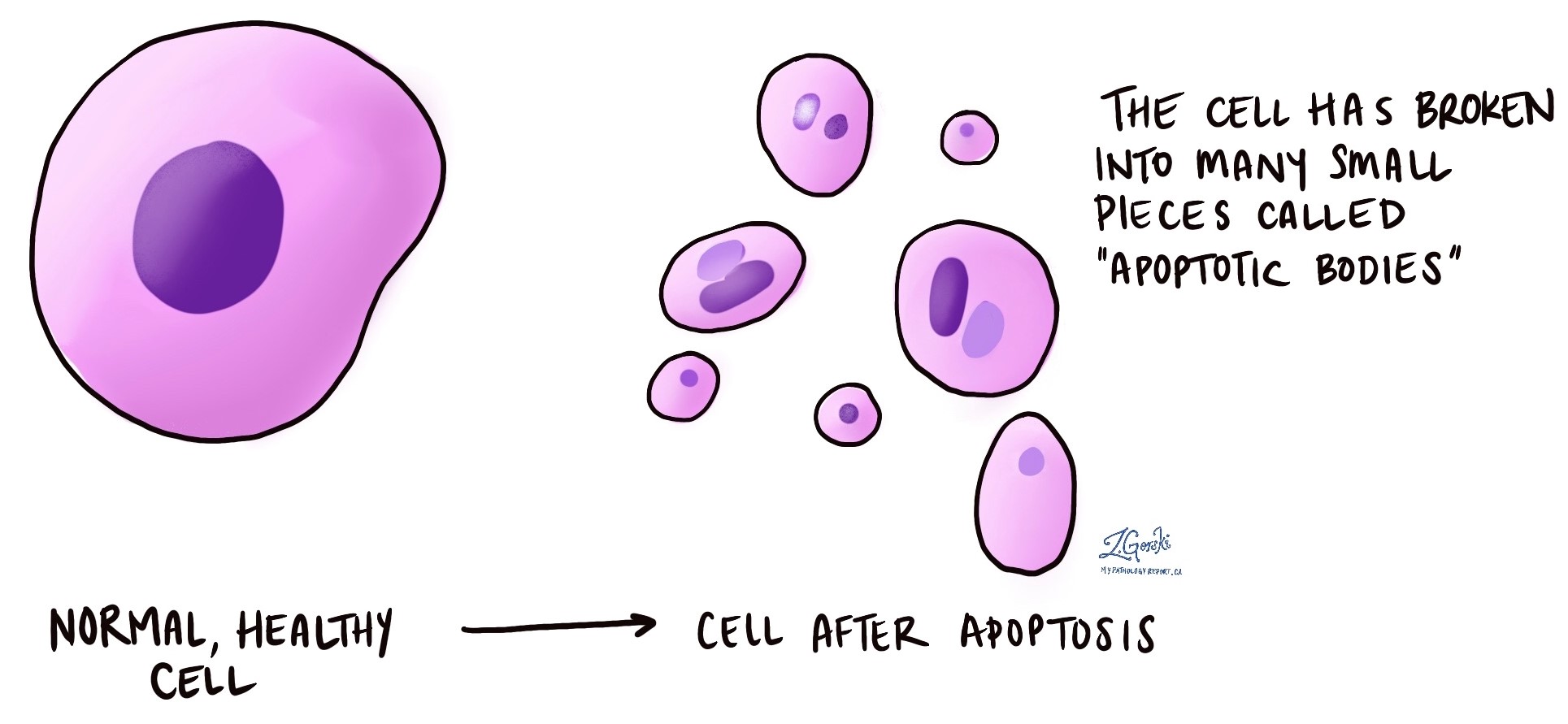Apoptosis, often referred to as programmed cell death, is a natural and highly regulated process that occurs in all animals. It plays a crucial role in various biological functions, including development, tissue homeostasis, and the elimination of damaged or unnecessary cells. It is characterized by a series of well-orchestrated cellular events that lead to the orderly and controlled destruction of a cell. This differs from necrosis, an uncontrolled type of cell death commonly seen in malignant (cancerous) tumours.
Several key features distinguish apoptosis from other forms of cell death:
- Cell shrinkage: Apoptotic cells undergo condensation and shrinkage, leading to a decrease in cell volume.
- Chromatin condensation: The chromatin within the cell nucleus undergoes condensation and fragmentation.
- Blebbing: The cell’s membrane forms characteristic protrusions known as blebs. Ultimately the cell breaks up into multiple small apoptotic bodies.
- DNA fragmentation: The cell’s DNA is cleaved into fragments.
- Phagocytosis: The apoptotic bodies are efficiently engulfed and removed by histiocytes without inducing inflammation.
What causes apoptosis?
Apoptosis occurs for various reasons, and its regulation is essential for maintaining proper cellular function and overall health. Here are some situations where this change may occur:
- Developmental processes: Apoptosis is a fundamental mechanism during embryonic development. It helps shape and refine tissues and organs by eliminating specific cell populations. For example, the formation of fingers and toes involves apoptosis to separate individual digits.
- Tissue homeostasis: In adult organisms, apoptosis contributes to the maintenance of tissue homeostasis by balancing cell proliferation and cell death. Unneeded or damaged cells are eliminated to prevent issues such as cancer.
- Immune system regulation: Apoptosis is involved in the regulation of the immune system. It helps remove immune cells that are no longer needed or that may be harmful. It also prevents an excessive immune response that could lead to autoimmune disorders.
- Cellular damage or stress: Cells that are damaged, stressed, or infected by viruses may undergo apoptosis to prevent the spread of damage or infection to neighboring cells.
- Genetic damage: Cells with severe genetic damage that cannot be repaired may undergo apoptosis as a protective mechanism to prevent the propagation of damaged genetic material. This type of cell death is commonly seen in some types of malignant (cancerous) tumours.
- Hormone-induced apoptosis: Hormones can trigger apoptosis in certain cells. For example, during menstrual cycles, the lining of the uterus undergoes controlled cell death in response to hormonal signals.
About this article
This article was written by doctors to help you read and understand your pathology report. Contact us if you have questions about this article or your pathology report. For a complete introduction to your pathology report, read this article.




